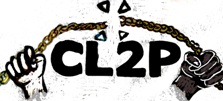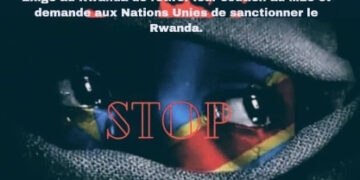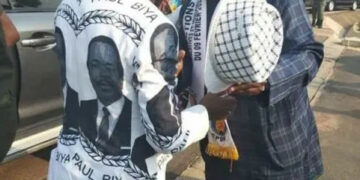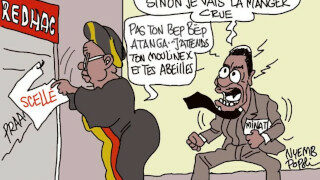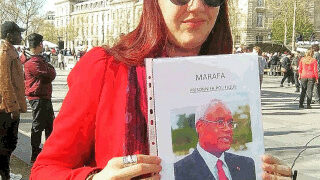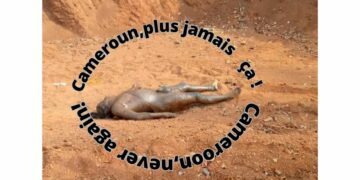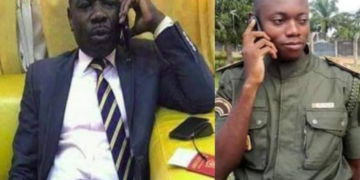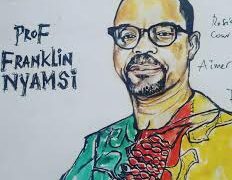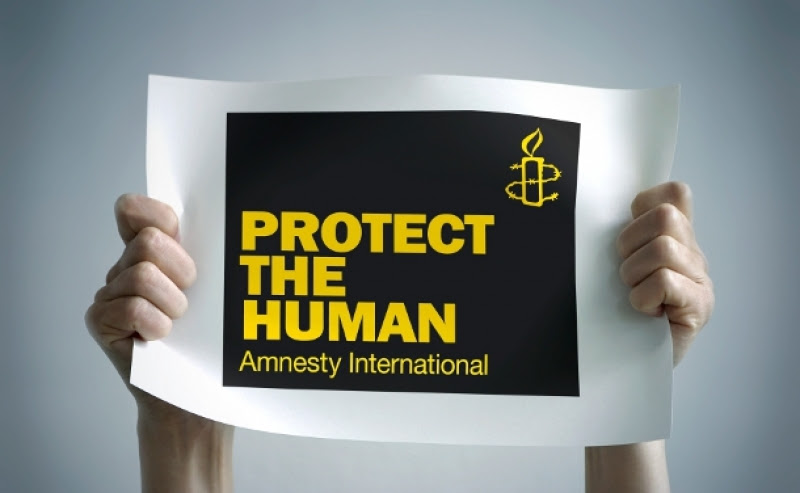An investigation by Amnesty International experts has gathered credible evidence that it was Cameroonian soldiers depicted in a video carrying out the horrific extrajudicial executions of two women and two young children. While an investigation has now been announced, the Ministry of Communication earlier dismissed video footage of the killings as “fake news”.
Extensive analysis of the weapons, dialogue and uniforms that feature in the video, paired with digital verification techniques and testimonies taken from the ground, all strongly suggest that the perpetrators of the executions are Cameroonian soldiers.
“The Cameroonian authorities’ initial claim that this shocking video is fake simply doesn’t stand up to scrutiny. We can provide credible evidence to the contrary. Given the gravity of these horrific acts – the cold blooded and calculated slaughter of women and young children – these hasty and dismissive denials cast serious doubt over whether any investigation will be genuine,” said Samira Daoud, Deputy Director of Amnesty International’s West Africa office.
“It is imperative that a proper, impartial investigation is undertaken and those responsible for these abhorrent acts are brought to justice.”
While all the elements analyzed so far by Amnesty International strongly suggest the authenticity of the video, the date at which it was taken remains unclear.
The video shows the soldiers using Galil and Kalashnikov-style rifles. While AK-type weapons are common, the Galil, the weapon specifically used in the execution, is comparatively rare and distinctive. The Small Arms Survey lists the Galil as only “occasional” in sub-Saharan Africa among governments, and as unknown among non-state actors. The only force in the area carrying Galil’s are a small subset of the Cameroon Army.
Both the weapons and uniforms of the soldiers in the video are indicative of the Cameroon army, and display patterns consistent with a number of possible units, including regular infantry and the Rapid Intervention Battalion (BIR), the special forces of the Cameroonian army.
The person filming the video specifically identifies two members of the group as soldiers. The first is a second-rank soldier (soldat de deuxième grade) who he names as “Cobra”, the second a Master Corporal (caporal chef) who is named as “Tchotcho”. These names mean that the group can be identified.
The Master Corporal’s uniform is a tiger stripe pattern that is standard among Cameroon regular army. The other soldiers are wearing black shirts and green-and-black woodland pants. While the Ministry of Communication claims that the mixed and casual nature of the uniforms indicates a lack of authenticity, Amnesty investigators have found the opposite. Mixed and partial uniforms are common among army personnel, especially in remote areas where this incident took place. Soldiers in the Far North region wearing casual flip flops and T-shirts, as well as a mix of tiger stripe print and woodland print, can be clearly seen in videos previously verified by Amnesty International.
The soldiers are followed by about 10 people whom the sources consulted said are most likely members of the local vigilantes’ committee (because they carry light weapons such as clubs and machetes) from the nearby village.
According to Amnesty International’s analysts, the video was likely filmed in the Mayo Tsanaga area in the Far North region of Cameroon. The vegetation is generally consistent and matches other footage from the area. Terrace cultivations, as visible in the video, are found in Mayo Tsanaga. The rocks, the mountains and the low-growing shrubs (locally known as “tchaski”) can also be found in Mayo Tsanaga. There is a military base located in Mozogo in this region.
“The evidence we have provided forms a firm basis for strongly suggesting that the individuals committing these atrocities are members of Cameroon’s armed forces. Some individuals are clearly identifiable and cannot be allowed to get away with such a heinous act with impunity,” said Samira Daoud.
“While the crimes under international law, including war crimes, and human rights violations committed by Boko Haram in Cameroon are despicable, absolutely nothing can justify the crimes being committed by some members of the armed forces.”
Amnesty International is calling for those suspected of criminal responsibility for these crimes under international law, including superiors who knew or should have known that subordinates were committing the extrajudicial executions, to be brought to justice in fair trials before ordinary civilian courts.
Background
Amnesty International has documented crimes under international law, some amounting to war crimes, as well as human rights violations by members of the Cameroonian security forces in their fight against the armed group Boko Haram in the Far North region of the country.
This includes the widespread use of torture to extract ‘confessions’ from hundreds of people accused – often with little or no evidence – of being affiliated with Boko Haram.
See also Cameroon: Right cause, wrong means: Human rights violated and justice denied in Cameroon’s fight against Boko Haram (2016) and Cameroon: Human rights under fire: Attacks and violations in Cameroon’s struggle with Boko Haram (2015).
